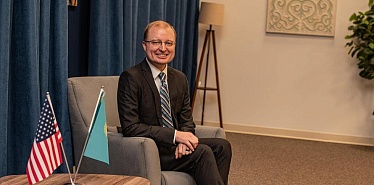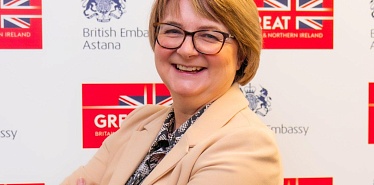The ARCHICA-2024 International Architects’ Congress recently took place in Almaty and Tashkent, where we had the opportunity to speak with Magda Kmita, an architect whose projects have won numerous international awards. Our conversation covered her profession, sources of inspiration, and her impressions of Kazakhstani cities.
Magda Kmita, cofounder and head of interiors at The Big Picture, Linkedin

About myself
I am a partner at The Big Picture, a global company with projects spanning Ireland, Poland, Uzbekistan, and Kyrgyzstan, and we are soon opening an office in Kazakhstan. I oversee the interiors division, managing projects from initial sketch to completion. For me, it's not only about the design but also about execution. We select materials for each project, and our dedicated team coordinates all elements, ensuring every choice is carefully thought out. At The Big Picture, we approach each project individually, tailored to meet the client’s needs, whether it’s a private or public space.
With over 20 years of experience, my passion for architecture and interiors began in childhood through drawing and studying art. With my parents' support, I decided to pursue architecture, studying first in Poland and then in Spain. My time in Madrid deepened my fascination with architecture, especially after meeting Álvaro Siza Vieira, a renowned 20th-century architect. His ideas inspired me to seek deeper meaning in my work.
Architecture has the advantage of being adaptable across borders, allowing me to explore diverse cultures. Recently, I spent two weeks in Central Asia, meeting our team and clients, and noticed that people share common desires — comfort, growth, and a better future. For me, architecture is a blend of sociology, psychology, and art.
On Central Asia
I visit Central Asia four to five times a year, overseeing projects and meeting clients and partners, adjusting my schedule as needed. My latest trip began in Uzbekistan, where we recently completed several projects in Tashkent and opened a local office with a team of ten.
I then traveled to Astana, Kazakhstan’s capital, where the city’s rapid development is impressive. Only recently have high-rises started appearing, yet the city’s transformation is remarkable. In Astana, we are working on the reconstruction of Asia Park shopping mall in collaboration with BI Group. This significant project demonstrates the city's commitment to enhancing urban spaces. Astana reminds me of a large-scale construction site, reminiscent of Dubai.
Almaty, on the other hand, is a city rich in history and surrounded by nature. It’s lush and green, with numerous pedestrian zones that blend infrastructure, nature, and culture. The center is dotted with small, stylish design elements that add a unique charm. Shops like Qazaq Republic showcase a modern and stylish approach, as do many restaurants, bars, and hotels with thoughtful designs. Unlike Tashkent’s more traditional cafes, Almaty’s venues follow global trends. We were involved in a stadium renovation project in Almaty, which made it to the shortlist of the prestigious World Architecture Festival.
On architecture trends
Trends in interiors and design now prioritize creating a comfortable atmosphere, rather than following rapidly changing styles. People value not just visual appeal but also the customer experience a space provides. For example, modern malls are evolving into cultural and entertainment hubs. A new center in Seoul, for instance, features a massive library in its atrium.
Comfort, convenience, good lighting, and a connection to nature remain core design elements. Natural spaces, parks, and green areas are increasingly popular, offering people a place to relax and recharge after a busy day.
Artificial intelligence is also making an impact, helping to generate design concepts and 3D renderings, which saves time. However, AI often replicates elements from other projects, lacking the depth and nuance that human creativity provides. Architecture and design go beyond visual concepts; they require implementation. Even with construction complete, furniture selection and layout require a human touch, which AI cannot fully replicate.
On inspiration
I draw inspiration from travel, exhibitions, and art biennales. Architecture, design, and art are closely linked, and we enjoy incorporating art elements into our interiors. These elements add prestige and can transform a space’s atmosphere. Sometimes, an idea from a year ago resurfaces with a new project.
Another source of inspiration is working with our team and clients. Our approach is always personal, not limited by fixed preferences. We discuss every detail collaboratively.
On the future of architecture in Kazakhstan
Kazakhstan's architectural and interior development should extend beyond the central cities of Almaty and Astana, as other cities need attention too. Kazakhstan is a vast country, and regional development could significantly improve people’s quality of life. Future projects should focus on landscaping, greenery, public spaces, and meeting areas.
Preserving Kazakhstan’s local character is crucial rather than copying designs from other countries. When constructing malls or other spaces, it’s important to consider local needs and cultural specifics, creating spaces that are not only functional but also reflect the spirit of the region, rather than merely adopting external forms.














